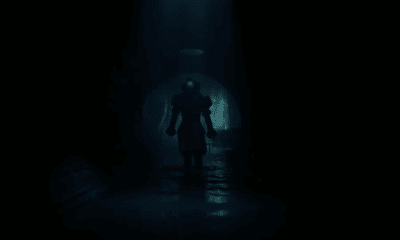Scripted formats have long captivated audiences, from the predictable beats of televised game shows to the carefully choreographed thrill of spinning wheels under studio lights. The common thread across decades of this entertainment is the moment of suspense right before the outcome. When the dial slows, the reel hesitates, or the host pauses just a beat too long.
Today, this format no longer belongs exclusively to broadcasters or stage lights. It has moved into individual hands, where the spin happens on screens, initiated by a tap or click. This evolution is behavioral. The viewer has become the initiator.

Every Spin Tells a Story
Each time a user spins, something small unfolds. It could be the repetition of familiar elements, the anticipation that builds without orchestration, or the subtle progression hidden in what feels random. The simplicity of the action belies the layers it can carry. That happens especially when unexpected elements appear without disrupting the pace. See what makes Jackpota unique through how these elements are applied for structural rhythm. The interaction feels designed to respond, not push. This responsiveness makes the spin feel like more than just motion. It becomes a small, contained moment of focus.
That structure changes how people engage. The design doesn’t speed things up or slow them down. It still holds long enough for the user to decide what happens next. That, too, is a kind of control.
Consistency as a Choice, Not a Constraint
Digital environments emphasize novelty like new features, visual changes, limited-time formats. But for platforms that aim to build longer-term interaction, familiarity can matter more. A layout that remains predictable over time becomes easier to navigate. Once learned, it doesn’t require re-learning. Users return not to be surprised. They return to pick up where they left off.
This doesn’t mean avoiding change. It means introducing it through function rather than flash. Accessing a session from a mobile browser or a larger screen should give a consistent experience. What users find and how they navigate it ought to feel aligned. Not identical, just aligned.
This isn’t always highlighted in reviews or feature lists. Yet it’s often what supports the longevity of use. Not every improvement is visible. Some of the most effective ones are those that simply remove the reasons to hesitate.
Quiet Intervals and the Weight of Pause
A spin is often imagined as instant, quick, repeated, and automatic. But pauses have value too. Platforms that support both steady pacing and patient interaction create space for presence.
Not everyone uses these tools the same way. Some sessions are continuous, others brief and occasional. Design that adapts to both patterns respects the variance in how individuals interact with systems. There’s no need to reward fast clicks or encourage continuous motion. It’s enough to allow both to exist.
Within that calm, smaller design choices start to matter more. Sounds that don’t distract, animations that don’t demand attention, colors that rest instead of shout. These are signals. They let users know they’re still connected, even when nothing flashy is happening.
Structured for the Return Visit
There’s a certain confidence in minimalism. It signals that what’s provided doesn’t require reinforcement. No countdowns, no overlays reminding someone of what they might miss. Just a steady presence. This structure doesn’t push, it waits.
When a user returns after a break and finds everything where it was, trust builds. Trust that time away won’t create friction. That nothing essential changed without notice. That the system respects attention rather than chase it. This kind of trust accumulates slowly. It turns one-time visitors into familiar users. It is not because they were pulled back, but because returning was easy. And sometimes that’s enough.
Systems That Stay Out of the Way
Technology should never be the center of attention. When everything works, nothing feels like a feature. Stability, speed, clarity, these are not extras. They are the baseline. They make it possible for users to focus not on the tool, but on the task.
There’s also value in things not breaking. In pages loading cleanly. In buttons responding without delay. These aren’t innovations. They’re expectations. But meeting expectations, quietly and consistently, builds satisfaction over time.
This is where digital systems succeed or fail. Not in big updates or standout visuals, but in the quiet integrity of working every time, across every platform, without asking for more than the user wants to give.

Latest Posts
-


Film Trailers
/ 1 day agoFirst trailer for Darren Aronofsky’s ‘Caught Stealing’
Sony Pictures has released the debut trailer for Darren Aronofsky’s new film Caught Stealing,...
By Paul Heath -


Film Reviews
/ 2 days ago‘Lilo and Stitch’ review: Dir. Dean Fleischer Camp (2025)
Director Dean Fleischer Camp won audiences over with the fantastic Marcel the Shell with...
By Kat Hughes -


Apple TV
/ 2 days agoApple TV+ debuts first look at new season of ‘Platonic’ with Seth Rogen and Rose Byrne
Apple TV+ has landed a first look at the second season of Platonic, the...
By Paul Heath -


Television
/ 2 days agoTrailer for HBO Max prequel series ‘IT: Welcome to Derry’
A teaser trailer has landed for HBO Max’s IT: Welcome to Derry which will...
By Paul Heath
